April 16, 2025
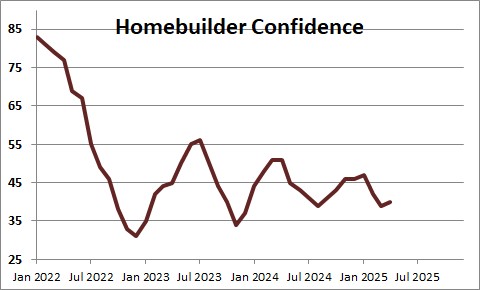
Homebuilder confidence rose 1 point in April to 40 after having declined 3 points in March. Builders are worried about the imposition of tariffs, still high mortgage rates, and the cost of materials. Keep in mind that the breakeven point for this series is 50 so at 40 it is clear that builders are still being cautious.
NAHB Chairman Buddy Hughes, a home builder and developer from Lexington N.C. said, “The recent dip in mortgage rates may have pushed some buyers off the fence in March, helping builders with sales activity. At the same time, builders have expressed growing uncertainty over market conditions as tariffs have increased price volatility for building materials at a time when the industry continues to grapple with labor shortages and a lack of buildable lots.”
Chief Economist Robert Dietz said, “Policy uncertainty is having a negative impact on home builders, making it difficult for them to accurately price homes and make critical business decisions. The April HMI data indicates that the tariff cost effect is already taking hold, with the majority of builders reporting cost increases on building materials due to tariffs.”
Traffic through the model homes rose 1 point in April to 25 after having fallen 5 points in March.. Traffic through model homes remains low as still high mortgage rates are reducing the number of interested buyers and some buyers may be re-thinking their purchase intentions given the economic uncertainty that exists today with respect to tariffs in particular and their potential impact on inflation.
.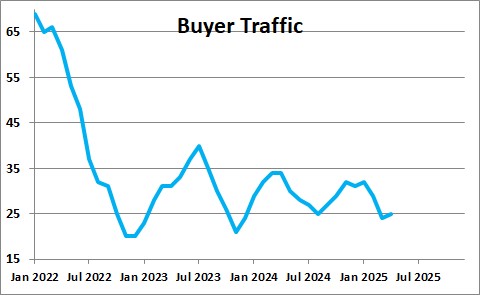
The homebuilders expectations index fell 4 points in April to 43 after having been unchanged in March. The declines in recent months reflect builders concerns about both their cost of materials given the tariffs and the willingness of their potential buyers to buy given the uncertainty that exists today.

Mortgage rates have recently declined to the 6.7% mark which is slightly lower than it has been in other recent months. We expect mortgage rates to inch lower to 6.5% by the end of the year.
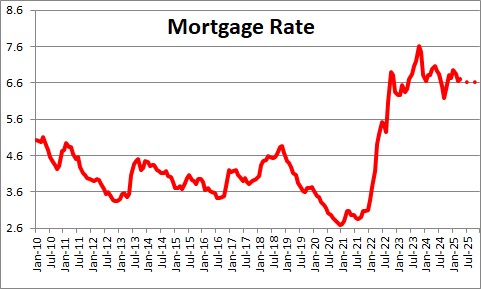
An acute shortage of homes available for sale has caused prices to climb slowly in recent months. Anemic demand should push prices lower as the year progresses. But the shortfall of homes available for sale will prevent prices from falling very much. We expect little change in prices for the remaining 8 months of this year.
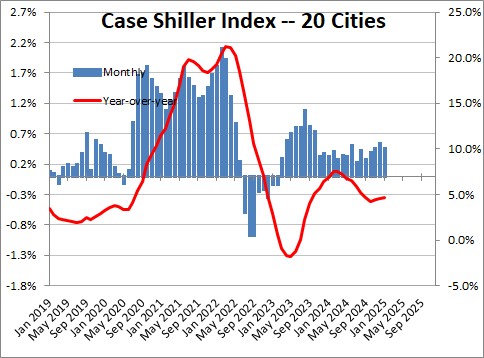
If home prices are relatively steady, the economy continues to crank out jobs, wages rise, and mortgage rates gradually decline to the 6.5% mark, housing affordability should increase by the end of this year.
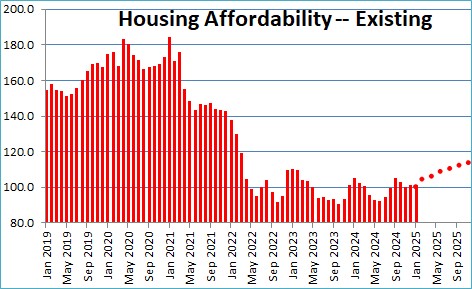
We expect GDP growth to be 0.5% in the first quarter and 2.0% growth in 2025.
Stephen Slifer
NumberNomics
Charleston, SC
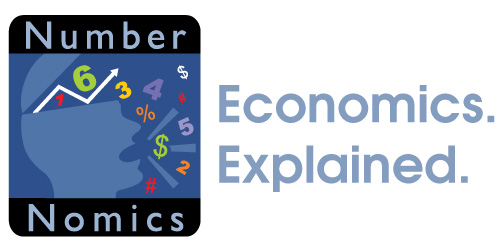
Good afternoon Steve. How are multiple unit structures or congregant living structures counted in “housing starts?” Thank you.
Hi Sidney.
I can only answer your question about multiple unit structures. The Census Bureau publishes data for housing starts overall and breaks that down into single-family and multi-family units. I do not know how they count congregant living structures by which I guess you refer to old-age facilities, nursing homes, assisted living facilities, and shelters. However, someone in the group that produces the housing starts data can undoubtedly help. 301‐763‐5160